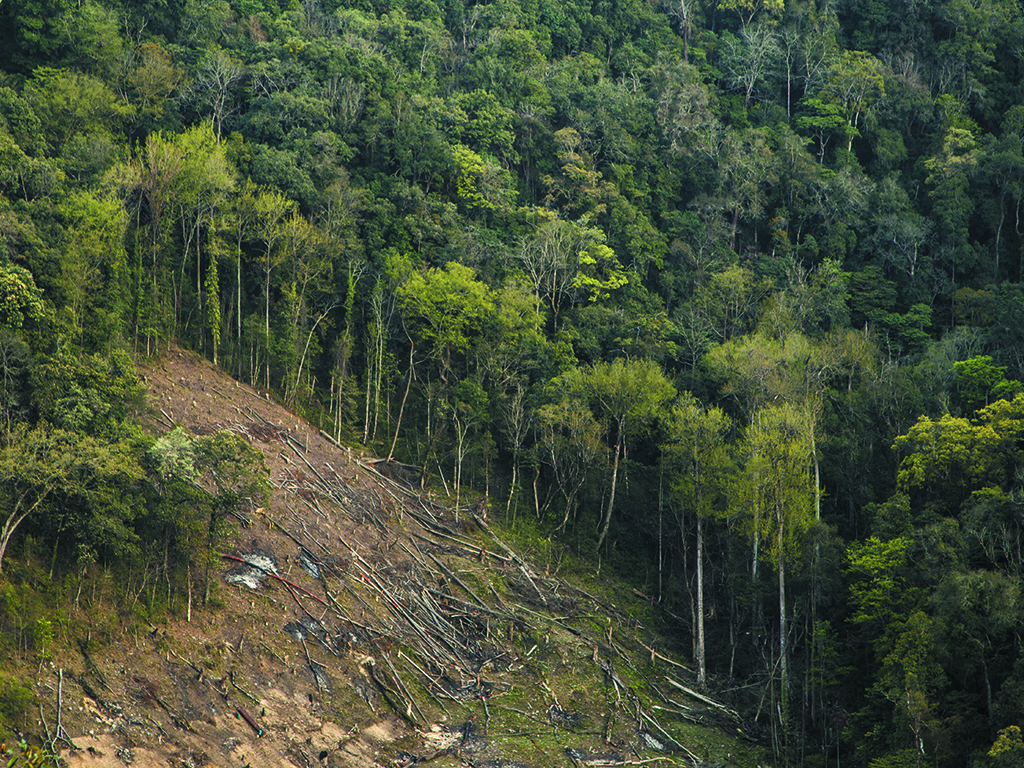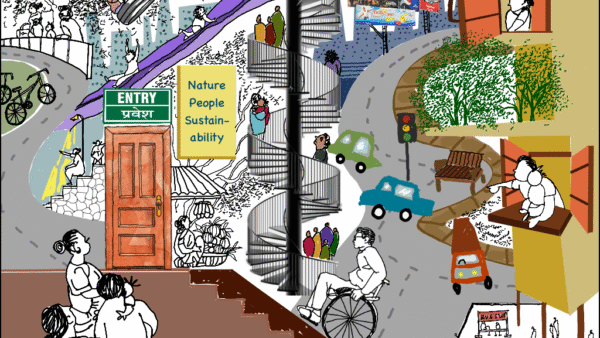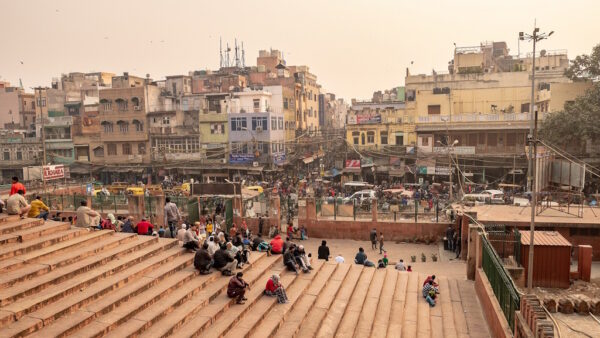Dehradun, the popular tourist destination, has been known for its cool winters and pleasant summers. Nestling in the foothills of the Himalayas and surrounded by lush old forests, its summer temperature usually ranged between 26 to 31 degrees Celsius – except this year. On May 31, Dehradun recorded 43.3 degrees Celsius, its highest in 157 years. This brought out a large number of the usually easygoing residents in a protest rally – 4,000 by one estimate – last Sunday (June 23) to demand that the government of Uttarakhand not sacrifice the trees in the region for infrastructure projects.
The last few years have seen Dehradun divested of more than 20,000 trees for a number of projects, including the controversial Char Dham Yatra road-widening; 200 fully-grown Eucalyptus trees were recently felled for the construction of Sahastradhara Road. Nearly 40,000 more trees have been marked for felling and 250 old trees in central Dehradun will make way for a four-lane road.
“We saw a huge turnout. Over the past 10 years or so, Dehradun has been ruthlessly concretised. Everything that it is famous for – litchi orchards, Basmati fields – is gone, riverbeds have houses constructed upon them, the green cover has shrunk. I’m not even talking about the forest outside the city which must have shrunk by almost 50-60 percent in the last 20 years. And to make matters worse, the new Master Plan has allowed for only one percent green cover,” explains former editor and Doon resident Ranjona Banerji, who participated in the march.
A member of the group ‘Friends of the Doon’, Banerji has been writing about the city’s ecological issues. Residents have pointed out to her about several other projects, mostly national highway and construction projects, that have caused an ecological loss to the city. “A massive flyover has been planned on a riverbed, not across a river…
Almost all projects from the centre are to increase tourist traffic, to reach from Delhi to Dehradun in four or two hours, but Dehradun is losing its green,” she says.
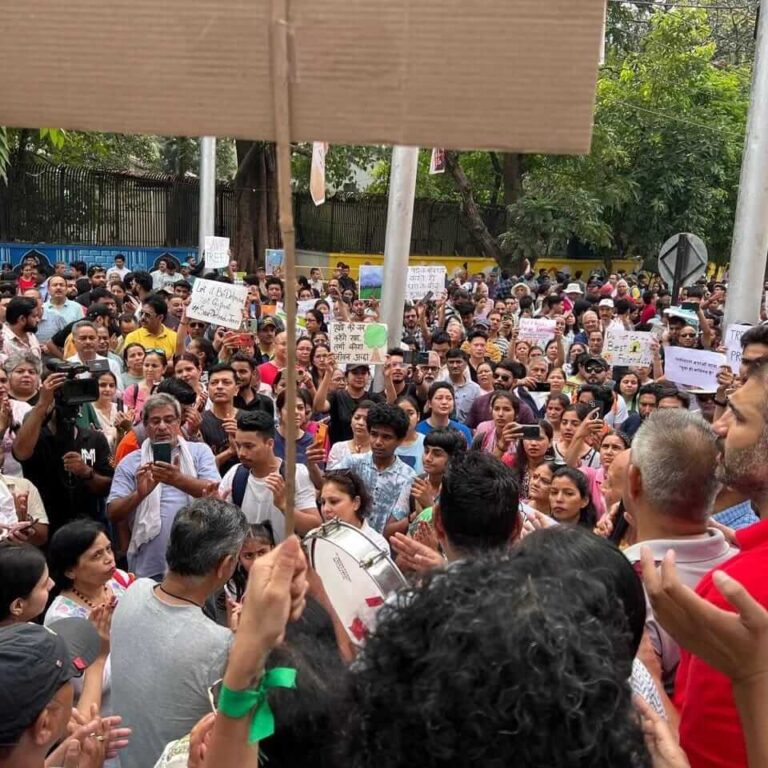
Photo: Ranjona Banerji
Thousands of kilometres away, in the secluded Great Nicobar Island[1] too, nearly a million primaeval rainforest trees will initially face the axe and, eventually, a fifth of the Great Nicobar spread over 244 square kilometres[2]. will be denuded. The purpose? The central government project which includes the construction of an international airport, a transshipment terminal to handle 16 million cargo containers[3] a year, a power plant, and a township to house nearly 3,50,000 families from the mainland.
An old port development plan from the 1970s has been expanded to this. It carries an unprecedented ecological and social cost – besides the loss of a million trees and forest land, it has already led to the denotification of two wildlife sanctuaries, the Galathea Bay and the Megapode. The Great Nicobar, a UNESCO biosphere reserve[4] and part of a biodiversity hotspot, houses more than 2,500 species of documented[5] fauna and flora. The Shompen community, an indigenous self-contained tribe, is at risk while residents of the Great Nicobar face displacement and an unfamiliar economy[6].
Environmentalists have warned that tree-cutting, blasting, dredging, construction, dumping of debris, ship traffic, pollution and the influx of outsiders will devastate the indigenous people and the wildlife there. Pankaj Sekhsaria, Associate Professor at IIT-Bombay, in the book he edited, The Great Nicobar Betrayal, writes: “…researchers and NGOs from across the country raised nearly 400 concerns related to ecology, rights of the indigenous communities, and the tectonic volatility and disaster vulnerability of the island. Not much of this was accounted for when environmental clearance was finally granted by the Environment Ministry in November 2022. A few weeks earlier, in October, the ministry granted Stage-1 (in-principle) forest clearance via a process marked by a complete lack of transparency and multiple violations of law.” The project has been labelled an ecological misadventure tripping over itself[7] but none of this has moved the Narendra Modi-led government yet.
Trees are victims all over
Across India’s cities and towns, trees are being targeted in what is possibly a great tree-clearing exercise. The Parliament was told last year that around 2.3 million trees had been proposed to be cut for mega infrastructure projects in the country – a staggering number by any measure[8].
Approximately a lakh are slated to be felled in protected forests in only three districts in Uttar Pradesh. The state government told the National Green Tribunal that “about 33,776 mature trees and 98,946 plants will have to be cut”[9][10] for the 111-kilometre road for Kanwariya pilgrims. It promised compensatory planting. The estimated cost of the road is Rs 658 crore but no value was placed on the 229.98 hectares of green to be cleared[11]
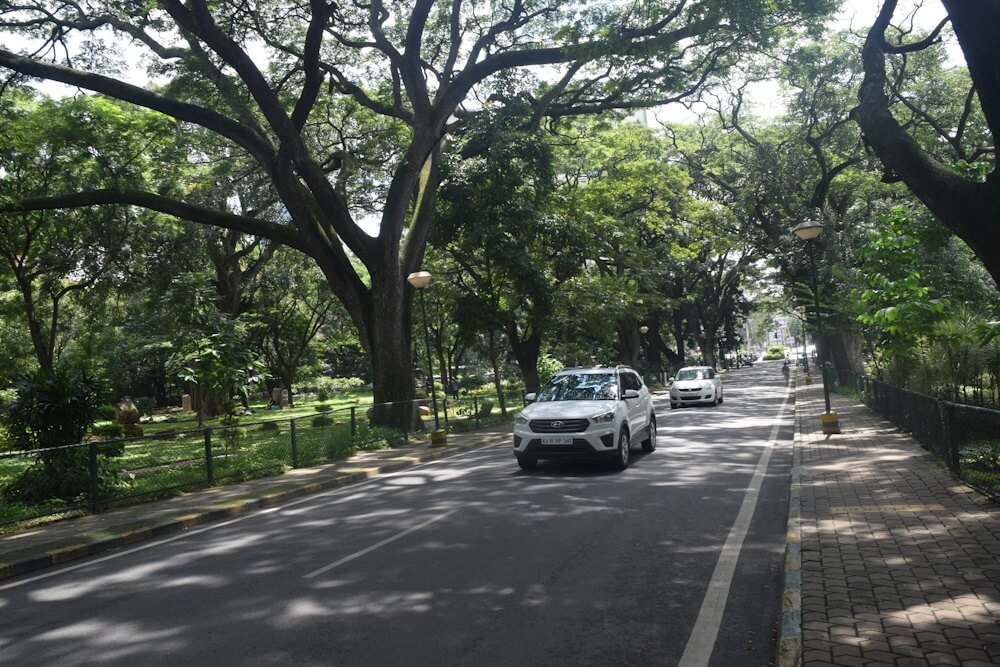
Photo: Ranjithsiji/ Wikimedia Commons
The Bruhat Bengaluru Mahanagara Palike (BBMP) permitted chopping of 2,098 trees for the 149-kilometre K-RIDE suburban railway project and estimates are that approximately 32,572 trees would be eventually felled[12].More than 2,000 people opposed it[13] which led to a committee being set up for a comprehensive review of trees[14]
And Bengaluru’s lush green area Cubbon Park might have lost trees if people had not objected to the Karnataka government’s plan to construct a 10-storey high court annexe there.[15] Meanwhile, the civic body recently fined a realty firm Rs 40 lakh for cutting 303 trees for a multi-storey housing scheme.[16]
Pune’s controversial Riverfront Development might see the felling of more than 21,000 trees. Though the Pune Municipal Corporation plans to plant 30,000 trees as compensation[17], these drives hardly replace the tree cover lost. Environmentalists have also ranged against the construction of Balbharati Road for which nearly 6,000 trees would have to be axed despite consultants suggesting alternative routes[18].
In Hyderabad, activists pointed out that the Gati Shakti project is leading to nearly 300 trees axed for railway stations[19]. And recent fatal tree collapse incidents showed how nearly 600 trees are diseased or damaged; the civic body received over 700 complaints of trees uprooted or damaged in May alone, way higher than normal [20].Chennai’s administration brought down 955 trees two years ago for metro and road construction projects[21].
The random and scattered nature of felling trees in a city for projects barely registers beyond that urban area but, taken together across cities, trees seem to be a conveniently expendable natural resource that are exploited, exhausted, and depleted. This is a construction-versus-trees battle in India’s cities – while governments and corporations execute projects at the cost of trees, people and communities struggle to save them.
Those in charge of it – municipal corporations and state governments – do not hold themselves accountable to people for trees; if they do, they minimise or delegitimise people’s concerns. Ironically, where a Tree Authority exists, it is housed in the same civic body that permits construction at the expense of trees.
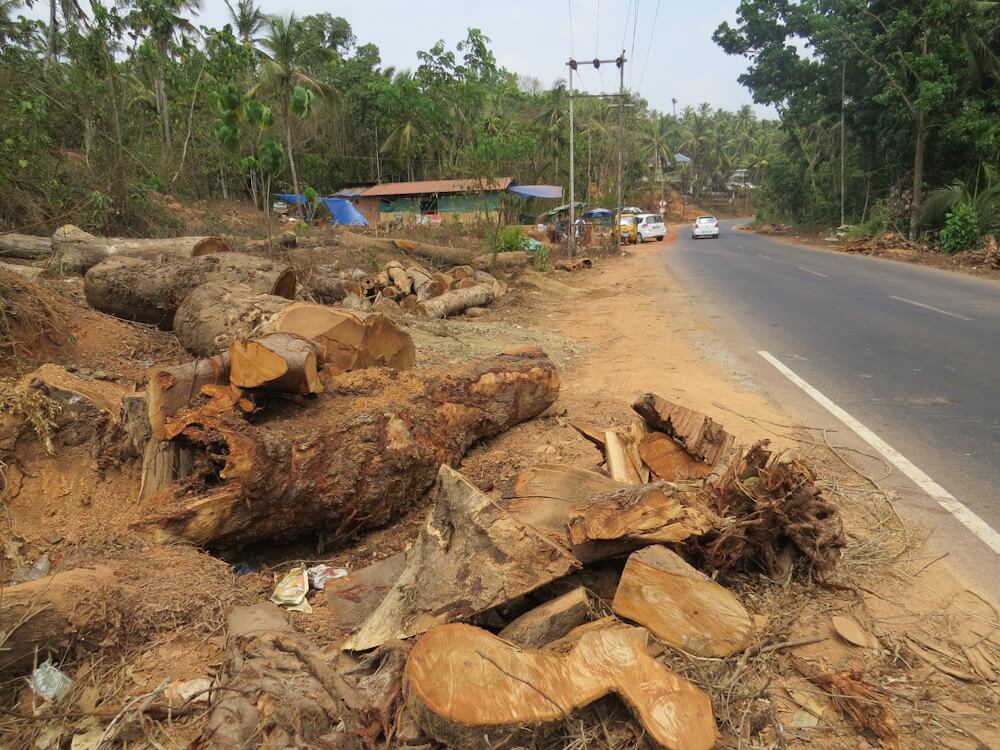
Photo: Wikimedia Commons
Many institutions and rules, no clarity
“Although the debates and discourses on urban treescapes have advanced especially in light of climate change, Indian cities are grappling with the objectives of tree protection using laws that barely recognise their role in urban areas or the challenges to them from mainstream approaches to city planning and development. Indian cities have been subject to large scale infrastructure development and building construction in the last two decades. Most of these developments cater to the privileged sections of society,” write environmental researchers Manju Menon and Kanchi Kohli in their 2021 paper for the Centre for Policy Research[22].
They refer to studies to show that high-income neighbourhoods in cities have a higher tree canopy while poorer neighbourhoods face “higher environmental burdens with lower environmental benefits”. The paper was an important addition to the literature on the management of urban tree cover. It examined the roles and responsibilities of various authorities, people’s interventions, and how tree transplantations or compensatory afforestation are “poor solutions”.
Menon and Kohli point out that “the state of urban trees is an important indicator of (this) political economy of city development. An analysis of a dozen tree laws for various city and municipal jurisdictions shows that these laws are out of step with the processes of intense and rapid urbanisation, and infrastructural development. They also do not factor in the multiple benefits that trees provide to urban societies or the changing social values about trees.
Trees that are outside formally demarcated forest lands and under the jurisdiction of the forest department, are most affected by city development and the failures of formal urban planning, the researchers write. Urban trees are governed by a range of institutions at the municipal level and their exact roles and responsibilities to protect trees are not clear or known; this makes these institutions unaccountable to people. The decisions regarding approvals to fell trees on a large scale to make way for construction or area development projects or the reactionary steps to afforest or “restore” specific areas of the city do not involve the public at all.
A review of tree protection laws and the roles of the institutions is overdue. What is called for in cities are independent assessments of treescapes before projects are approved.
Trees as climate warriors
While governments target ecological spaces – green areas and watercourses in cities – for construction and recreation projects, people have formed the bulwark. Environmentalists, academics, young people, NGOs and others have sparred with authorities to protect trees, urban forests and watercourses. Many have done tree mapping[23] to drive home the diversity of trees in cities and record them – an executive function that the authorities should have done and shared with people.
The fact that natural ecology, especially trees and urban forests, can be natural climate warriors or climate mitigators is rarely acknowledged by authorities. Trees and urban forests go a long way to combat the Urban Heat Island effect[24] and provide shade during heat waves that are increasingly more intense and frequent[25], trees help to absorb rainwater and carry it into the soil which helps to recharge underground aquifers[26], trees are the most effective de-carbonisers in the atmosphere, and trees provide the much-needed shade and rest areas in cities full of concrete structures.
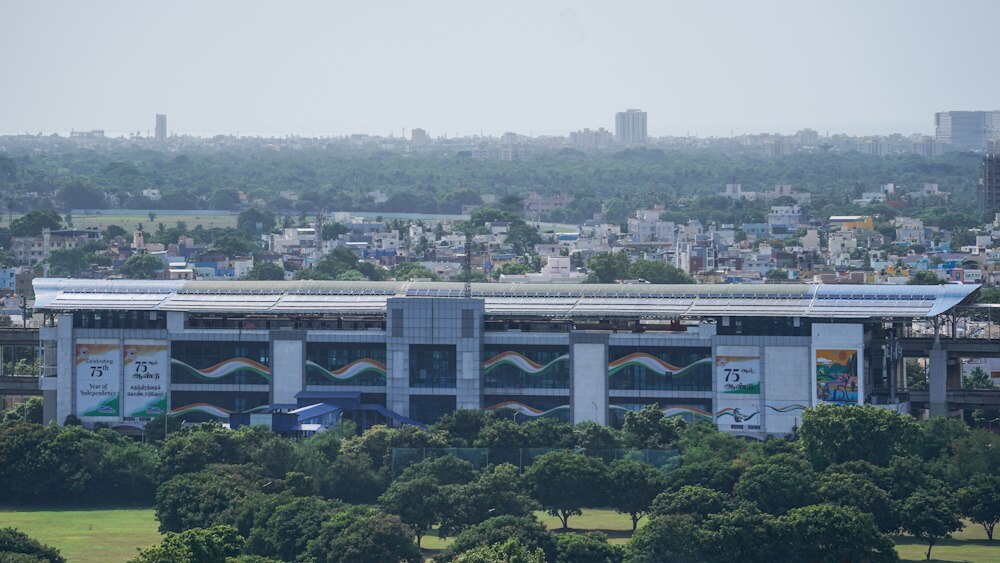
Photo: Timothy A. Gonsalves/ Wikimedia Commons
That institutions and governments have little regard for trees is evident in the Supreme Court’s June 25 observation while hearing the case in Delhi’s ridge forest area. Coming down heavily on the Delhi Development Authority (DDA) for violating court orders, it pointed to Lieutenant Governor Vinai Saxena’s site visit before directing the cutting of trees and pulled up the Delhi Government for permitting the felling of 443 trees[27].
How to convince authorities to not only leave trees and urban forests alone but also expand their cover is among the biggest challenges in India’s cities now at a time when mega infrastructure and construction projects are constantly framed as symbols of urban development. The first and important step in conserving trees cover in cities would be for each city to evolve an upper limit – a cap – beyond which the green cover will be not disturbed for any project.
To do this, the second step is vital. This is for local governments to undertake compulsory tree mapping in every ward or zone or neighbourhood of a city, mandated by law. Thirdly, these maps must be made public on the official websites of urban local bodies for people to download, correct, and ensure that the trees and urban forests remain protected. But there’s a catch – the tyranny of averages. By preserving large centralised green spaces, a city can show a rise in its average per capita green cover while still leaving many areas – especially poorer neighbourhoods – with fewer or no trees.
This requires the fourth task – plan, make and maintain small green spaces such as parks and gardens, linear parks along roads and watercourses, small tree enclaves, compulsory tree planting of a certain ratio of every plot, and an incentive to people to preserve old and matured trees. Making the tree movement local and neighbourhood-based, as many examples around India have shown, is the way forward to ensure that cities do not lose their green cover as a price for construction and ‘development’.
Trees are people’s allies against climate change. It is time that governments understood this.
Cover photo: Wikimedia Commons

